Long-sleeved shirts are versatile wardrobe staples, but folding them effectively can be an art form that saves space, minimizes wrinkles, and maintains their pristine appearance.
In exploring the best ways to fold long-sleeved shirts, we delve into techniques ranging from the minimalist KonMari method to the precise dress shirt fold.
Each method offers unique advantages, ensuring that whether you’re organizing your casual tees, elegant dress shirts, or cozy sweaters, your clothing will remain in optimal condition and easily accessible.
Join us to discover the secrets of efficient and elegant long-sleeve shirt folding, elevating your wardrobe organization skills.
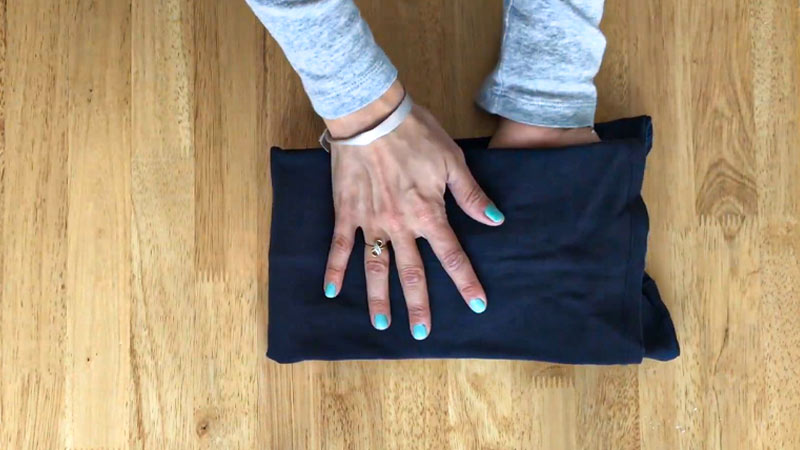
Best Way to Fold Long Sleeve Shirts
Long-sleeved shirts are essential in any wardrobe but can also be tricky to fold and store properly.
You must learn some effective folding techniques to save space, reduce wrinkles, and keep your long-sleeved shirts in good shape.
This guide will show you four ways to fold long-sleeved shirts, from the simple to the sophisticated. Whether you prefer T-shirts, dress shirts, or sweaters, we have a method that will suit your needs.
Here are the best methods to fold long-sleeve shirts:
Method 1: The KonMari Method

The KonMari method, inspired by the minimalist principles of Marie Kondo, is all about creating visually pleasing, space-saving, and easily accessible shirt storage:
Lay Out the Shirt Facedown
Start with a clean, flat surface like a table or bed. Place your long-sleeve shirt face down, with the backside facing up. Smooth out any wrinkles to ensure a clean canvas.
Vertical Fold
Fold the shirt in half vertically, making sure the sleeves align perfectly. This should create a clear centerline running down the middle of the shirt, dividing it into two halves.
Sleeve Fold
Fold both sleeves simultaneously towards the center, forming a triangular shape. Ensuring that the sleeves rest neatly on top of the shirt’s body without extending beyond its edges is crucial.
Final Fold
Complete the folding process by folding the resulting triangle into halves or thirds, depending on your shirt’s size and the available storage space. This step yields a compact rectangle, ideal for easy stacking and organization.
Method 2: The Rectangle Method
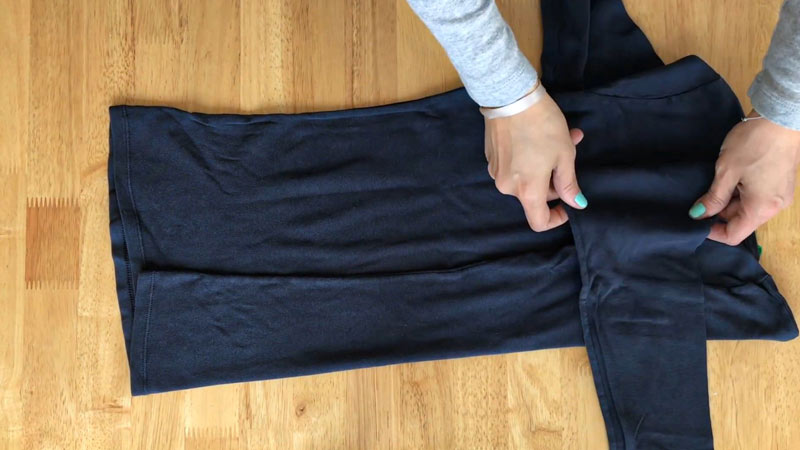
The Rectangle Method is a straightforward approach for achieving a neat and stackable shape:
Lay Out the Shirt Facedown
Begin by placing the long-sleeve shirt on a flat surface with the front side facing down. Gently smooth out any wrinkles or creases to create an even starting point.
Left Sleeve Fold
Fold the left sleeve diagonally toward the center of the shirt, starting from the shoulder. This should create a well-defined V shape on one side of the shirt.
Right Sleeve Fold
Replicate the diagonal fold with the right sleeve, similarly bringing it toward the center. The objective is to ensure that the two sleeves form a symmetrical V shape.
Bottom-Up Fold
Fold the bottom of the shirt upward so it meets the collar. Then, fold it again to create a smaller, rectangular shape. This final fold maintains the organization and cleanliness of the shirt.
Method 3: The Rolling Method
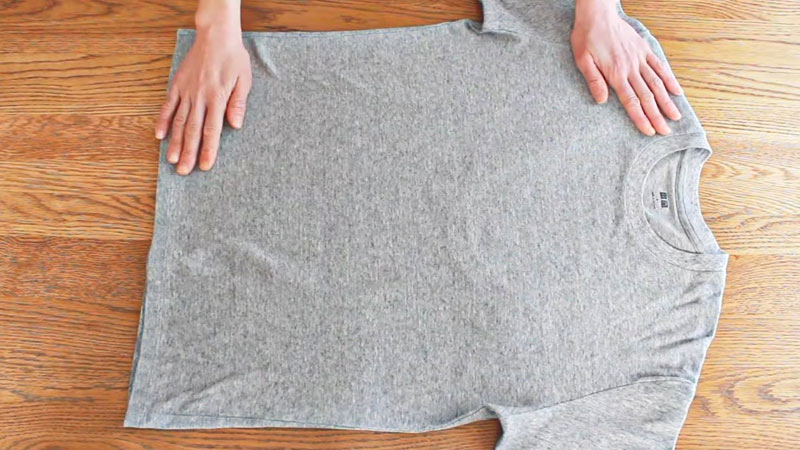
The Rolling Method is excellent for saving space and reducing wrinkles, making it ideal for travel or tight storage spaces:
Lay Out the Shirt Facedown
Begin by placing the shirt on a flat surface, with the front side facing down. Smooth out any wrinkles to create a wrinkle-free starting point.
Side and Sleeve Fold
Fold the right side of the shirt and its sleeve over to the center of the shirt. Repeat this action with the left side and sleeve. This creates a narrow, rectangular shape.
Rolling
Roll the shirt tightly and evenly from the collar until you reach the bottom. This rolling action compacts the shirt into a cylindrical shape, saving space and minimizing wrinkles.
Method 4: The Dress Shirt Method
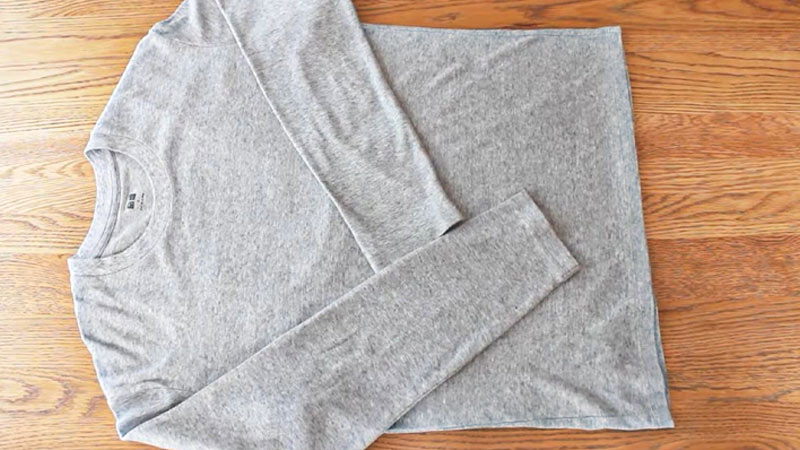
The Dress Shirt Method is a meticulous approach, particularly suitable for maintaining the quality of delicate or crisp fabrics:
Button Up and Smooth Out
Before folding, ensure that most buttons on the shirt are securely fastened. Then, carefully smooth out any wrinkles or creases, paying special attention to the collar and cuffs.
Lay Out the Shirt Facedown
Place the shirt on a flat surface, with the front side facing down. Take a moment to adjust the collar to lie flat and neat.
Left Side and Sleeve Fold
Begin folding by bringing the left side of the shirt and its sleeve over to the center, making sure the fold creates a straight, clean line along the side of the shirt.
Right Side and Sleeve Fold
Mirror the previous fold with the right side and sleeve, overlapping slightly with the left side. This results in a symmetrical and balanced fold.
Sleeve Triangles
Fold both sleeves backward at an angle, creating two triangles on each other. This meticulous step maintains the shirt’s structure and quality.
Bottom-Up Fold
Finally, fold the bottom of the shirt upward to meet the collar. Then, fold it again to create a smaller rectangular shape. This ensures a neat and organized final fold, preserving the shirt’s quality.
Travel-Friendly Folding Techniques
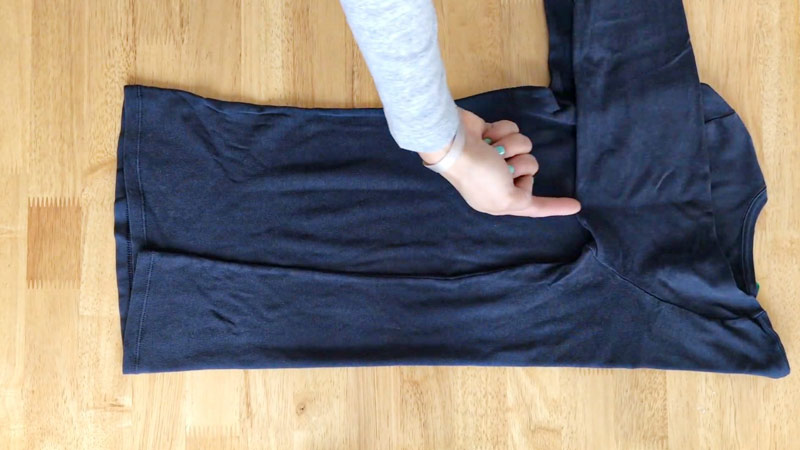
When packing for travel, efficient folding techniques can save space and help prevent wrinkles in your clothing.
Here are some travel-friendly folding techniques to make the most of your luggage space:
Bundle Packing
Bundle packing is a strategic method that involves layering clothes to form a compact bundle. This technique minimizes wrinkles by keeping the fabrics relatively flat and evenly distributed.
It’s especially useful for packing a mix of different clothing types, such as shirts, dresses, and pants. You create a structured bundle that fits snugly in your suitcase by layering and folding strategically.
Folding in Tissue Paper
Using tissue paper to fold clothes acts as a protective layer that prevents friction and reduces the chances of wrinkles.
This method is ideal for delicate fabrics and special occasion clothing. The tissue paper minimizes direct contact between garments, preserving their quality and appearance during travel.
Plastic Zipper Bags
Resealable plastic bags are versatile travel companions. Organizing complete outfits in individual bags saves time and effort when getting dressed on your trip. Labeling the bags helps you quickly locate specific outfits, making your mornings more efficient.
Compression Bags
Compression bags are especially beneficial for bulky sweaters, jackets, and blankets. By removing excess air, these bags make your clothes more compact and create extra space in your suitcase.
This technique is particularly handy for trips with varying climates, allowing you to pack warm layers without sacrificing space.
Use Packing Cubes
Packing cubes are an invaluable tool for organizing your clothes. They allow you to compartmentalize different types of clothing, making it easy to locate specific items without rummaging through your entire suitcase. Additionally, packing cubes help keep your clothes neatly folded and prevent them from shifting during transit.
Wrinkle-Resistant Fabrics
Selecting clothing made from wrinkle-resistant fabrics is a proactive approach to minimizing wrinkles during travel. Fabrics like polyester, spandex, and certain blends are less prone to creasing, making them excellent choices for hassle-free packing.
Layering
Placing heavier or less wrinkle-prone items at the bottom of your suitcase provides a stable base. This ensures that more delicate or easily wrinkled clothes are protected from potential shifting or pressure during transit.
Travel-Sized Iron
For those who prioritize wrinkle-free attire, consider packing a travel-sized iron or steamer. These compact devices are convenient for quickly smoothing out any stubborn wrinkles that may have occurred during transit, ensuring you look polished and put-together throughout your trip.
Troubleshooting of Common Issues
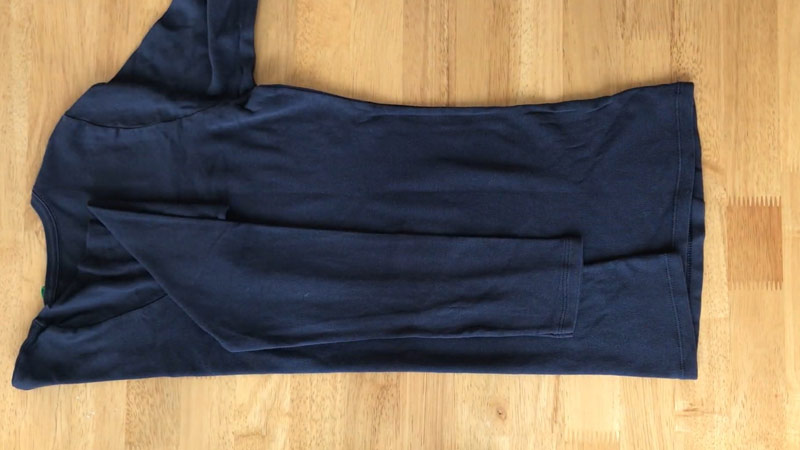
Troubleshooting common issues with folded long-sleeved shirts can help you maintain their quality and appearance.
Here are some tips for addressing common problems:
Wrinkles
Wrinkles can occur due to folding or storage. A handheld steamer or iron is an effective way to smooth out the fabric.
Remember to hang the shirt and apply the steamer or iron on a low to medium setting. This process removes wrinkles and refreshes the fabric’s appearance, making it look crisp and neat.
Fading Colors
Fading colors can result from exposure to harsh washing conditions or excessive sunlight. To preserve the vibrancy of the fabric, wash the shirts in cold water using a detergent specifically designed for color protection. Additionally, drying the shirts away from direct sunlight helps maintain their hues’ richness.
Musty Smell
A musty odor often indicates that the shirts have been stored damply. To address this, allow the shirts to breathe in a well-ventilated area.
Using a fabric freshener or placing them in a room with good air circulation can also help eliminate the musty scent, leaving the shirts smelling fresh and clean.
Stains
Stains can be a common issue, especially on light-colored shirts. It’s important to identify the type of stain and use an appropriate stain remover.
Blotting the stain gently, rather than rubbing, helps prevent it from spreading. Following up with a thorough wash according to the care label instructions ensures the stain is effectively removed.
Creases at Fold Lines
Creases along fold lines can occur due to repeated folding in the same manner. To address this, try folding the shirts along slightly different lines. This redistributes pressure points, reducing the appearance of creases and maintaining a smoother overall look.
Discoloration on Collar and Cuffs
Collar and cuffs are areas prone to discoloration due to regular wear. Pre-treating these areas with a stain remover or mild detergent solution before washing can be particularly effective. Ensuring thorough rinsing afterward helps prevent any residue from affecting the fabric’s appearance.
Loose Threads
Loose threads can be a result of regular wear and washing. Carefully trimming them with small scissors is the best approach. Avoid pulling on loose threads, as this can lead to further unraveling and potential damage to the fabric.
Odors from Storage
The fabric can absorb odors from storage. Allowing the shirts to air out in a well-ventilated area helps dissipate these odors. Using fabric fresheners or odor-absorbing sachets can also provide a pleasant, refreshed scent.
Fuzz or Pilling
Fuzz or pilling can occur over time, especially with frequent wear. Using a fabric shaver or a lint roller helps gently remove these surface imperfections, revitalizing the fabric’s appearance. Additionally, washing the shirts inside out helps minimize further pilling.
Tips for Storing Folded Shirts Effectively
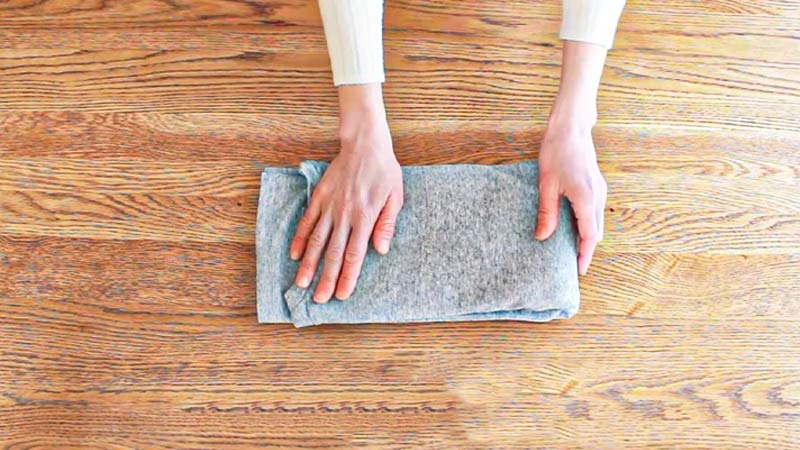
Properly storing folded shirts is essential for maintaining their quality and organization.
Here are some tips for effectively storing your folded shirts:
Drawer Organization
Drawer dividers or organizers are essential for keeping folded shirts neatly separated. They create individual compartments, preventing shirts from getting mixed up or disheveled.
Fold Similar Items Together
Organizing shirts by type or purpose streamlines your wardrobe. Grouping dress shirts, casual shirts, t-shirts, and other categories together makes it easy to locate specific items.
Stack Vertically
Vertical stacking allows you to see each shirt without disturbing the rest of the stack. This method is particularly effective for maintaining visibility and accessibility, especially in smaller spaces.
Rotate Your Wardrobe
Rotating your shirts ensures that each one gets regular use, preventing some from being neglected. This practice also helps distribute wear and tear evenly among your clothing items.
Use Shelf Dividers
When storing shirts on shelves, especially in closets, shelf dividers are barriers to keep shirts upright and prevent them from falling over. They maintain order and prevent the stack from becoming uneven.
Store by Usage Frequency
Placing frequently worn shirts at the top or in the most accessible area ensures easy access. Less frequently worn shirts can be stored lower down or towards the back.
Avoid Overstuffing Drawers
Leaving some breathing room in drawers or shelves prevents excessive pressure on the folded shirts. Overstuffing can lead to wrinkles and make it challenging to retrieve specific items.
Folded Clothes Boxes
Folded clothes boxes or containers are great for seasonal or less frequently worn shirts. These boxes can be labeled and stored on shelves or under the bed, maximizing space and protecting shirts.
Keep Shirts Visible
Arranging shirts so they’re all visible at a glance is efficient for quick selection. It eliminates the need to dig through stacks, saving time and maintaining organization.
Label Shelves
Labeling shelves or drawers according to your organization system ensures that every shirt has its designated spot. This simplifies the process of finding and putting away shirts.
Periodic Inspection
Regularly inspecting your stored shirts helps identify any signs of damage, stains, or pests early on. This proactive approach ensures that your shirts remain in excellent condition over time.
FAQs
Why is it important to fold long-sleeved shirts properly?
Proper folding helps save space, reduces wrinkles, and keeps shirts in good condition, making them easier to find and wear.
What is the KonMari method of folding long-sleeved shirts?
The KonMari method, developed by Marie Kondo, involves folding shirts into neat rectangles that can stand upright in drawers or shelves, maximizing visibility and accessibility.
How do I prevent wrinkles when folding long-sleeved shirts?
Lay the shirt flat, smooth out any wrinkles, and fold it carefully to avoid creases. Using a fabric-friendly spray or steamer can also help.
Can I use the same folding technique for all types of long-sleeved shirts?
While basic folding principles apply, delicate fabrics like linen or silk may require gentler handling, and dress shirts may benefit from a more structured folding method.
Is there a specific order for folding long-sleeved shirts?
Start by aligning sleeves and folding them in, then work towards creating a compact rectangle. Different methods offer variations on this process for optimal results.
Wrap Up
Mastering the art of folding long-sleeved shirts ensures a neat and organized wardrobe and extends the life and quality of your clothing.
Whether you opt for the efficient KonMari method, the space-saving rolling technique, or the meticulous dress shirt fold, each approach offers unique benefits. The key lies in understanding your specific needs and garment materials.
By following these folding methods and considering additional tips like proper storage, you can minimize wrinkles, save space, and maintain your long-sleeved shirts impeccably.
Embrace the art of folding, and your wardrobe will effortlessly reflect a sense of order and care.
Leave a Reply